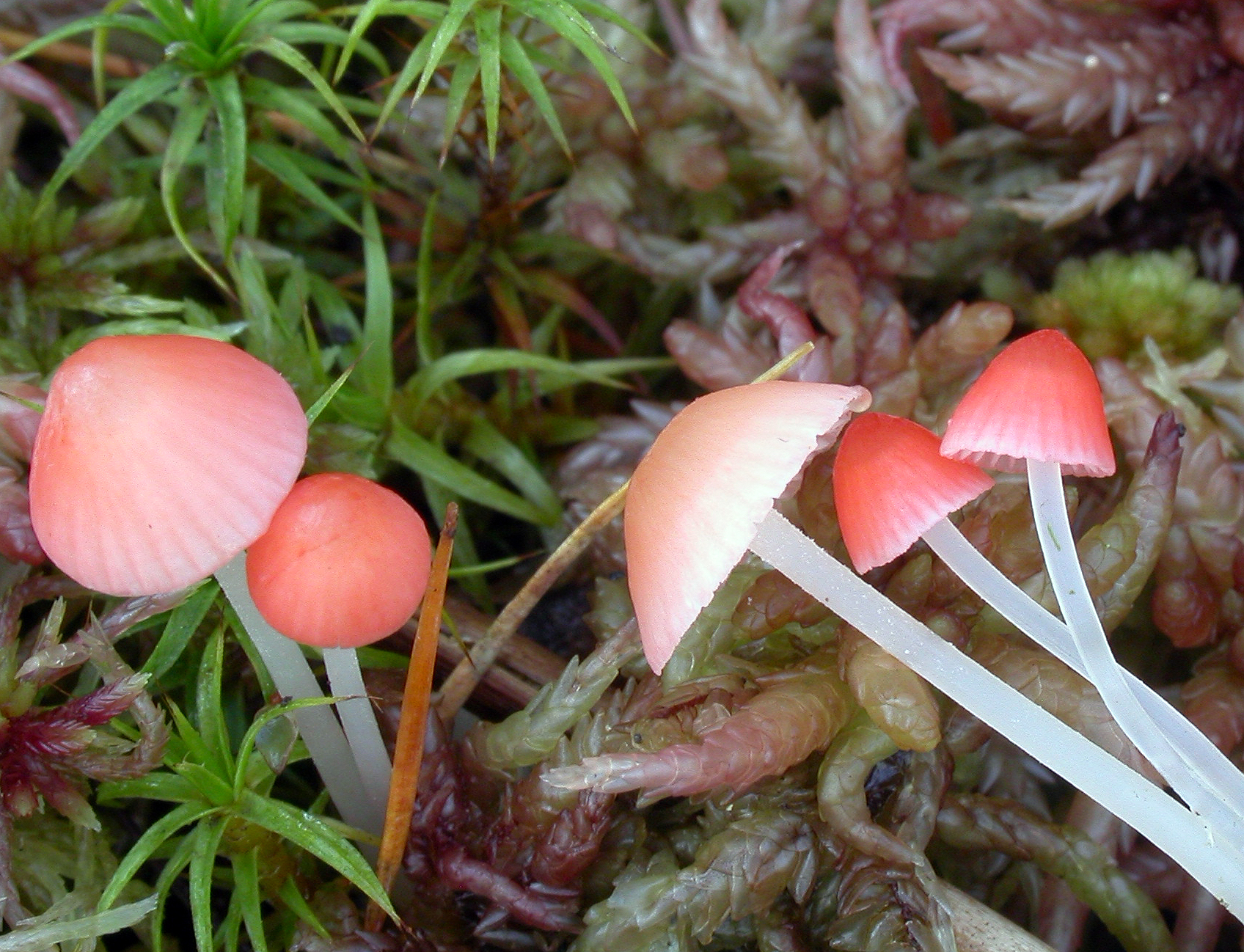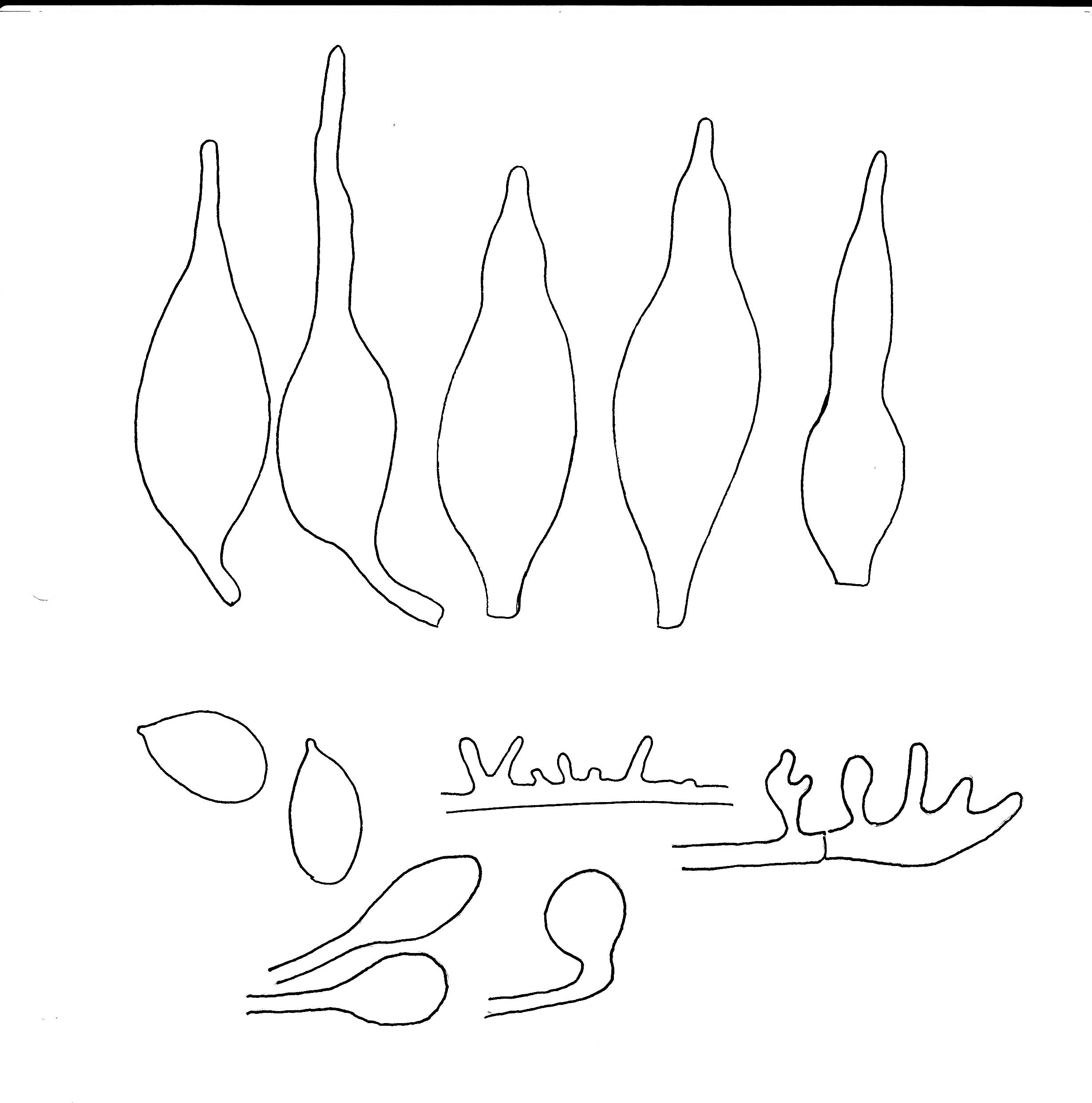Atheniella adonis
Atheniella adonis
- Innhold
- Description
- Ecology and distribution
Description
Cheilocystidia, spores, hyphae of the pileipellis and caulocystidia.
Cap 3-20 mm across, narrowly to broadly conical, without or with a small papilla, flattening with age, more or less umbonate, pruinose, glabrescent, shallowly sulcate to smooth, slightly translucent-striate, bright pink-salmon, scarlet or orange red, fading with age, rarely white. Gills 11-24 reaching the stem, ascending, somewhat ventricose, adnexed to broadly adnate, decurrent with a short tooth, pink to white, edge white. Stem 15-40 x 0.5-2 mm, hollow, fragile, ± cylindrical, pruinose, glabrescent, white or pink, often pink at the apex, attached with a patch of whitish, interwoven mycelial fibrils. Odour none. Basidia 25-35 x 6.5-7 µm, slender, clavate, 2-spored. Spores 7.2-9.5 x 5-5.5 µm, Q = 1.4-1.9, pip-shaped, non-amyloid. Cheilocystidia 35-45 x 12-14 µm, mixed with basidia, smooth, fusiform to lageniform. Pleurocystidia similar. Lamellar trama non-dextrinoid. Hyphae of the pileipellis 2- 5 µm wide, covered with simple to branched cylindrical excrescences. Hyphae of the cortical layer of the stem 2-3 µm wide, smooth; caulocystidia 15-50 x 3.5-13.5 µm, clavate to fusiform. Clamp connections absent.
Ecology and distribution
In forests and grassland, among grass and moss, on fallen twigs or decayed wood, under deciduous as well as coniferous trees. Also found under Salix in alpine sites. Autumn. A widespread, but rather uncommon species.

